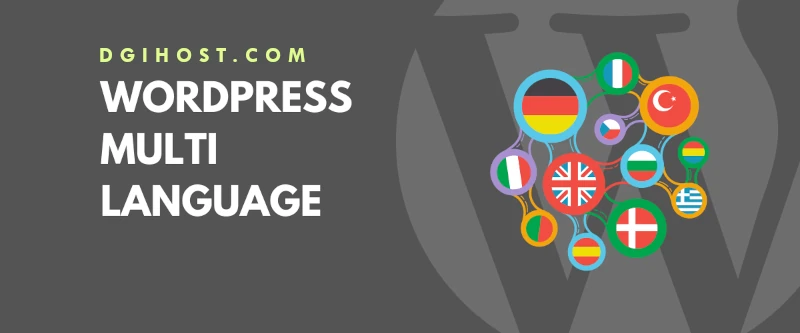
How to Create a Multi-Language WordPress Site: Plugins and Techniques
- by dgihost.com
In today’s globalized world, reaching a diverse audience is crucial for expanding your online presence. Creating a multi-language WordPress site allows you to connect with users in different regions by offering content in their native languages. This guide will walk you through the essential plugins and techniques to set up a multi-language WordPress site efficiently and effectively.
1. Choosing the Right Plugin for a Multi-Language WordPress Site
When creating a multi-language WordPress site, selecting the right plugin is critical. Several plugins can help you manage and translate your content. Here are a few top options:
- WPML (WordPress Multilingual Plugin): WPML is one of the most popular plugins for creating a multi-language WordPress site. It allows you to translate pages, posts, custom types, and more. WPML also supports translation management and offers a robust language switcher to help users navigate between languages.
- Polylang: Polylang is another widely used plugin that provides a user-friendly interface for translating your content. It supports both manual and automatic translations and integrates seamlessly with other plugins and themes. Polylang is ideal for those looking for a free or freemium option to build a multi-language WordPress site.
- TranslatePress: TranslatePress offers a visual approach to translation, allowing you to translate your entire site from the front-end. This plugin is great for creating a multi-language WordPress site as it provides a live preview of translations and supports both manual and automatic translation methods.
2. Setting Up Your Multi-Language WordPress Site
Once you’ve chosen a plugin, the next step is to set up your multi-language WordPress site. Here’s a general process that applies to most plugins:
- Install and Activate the Plugin: Go to your WordPress dashboard, navigate to Plugins > Add New, search for your chosen multi-language plugin, and click Install Now followed by Activate.
- Configure Language Settings: After activation, access the plugin’s settings page. Here, you can configure the default language, add new languages, and set up language switchers. Each plugin will have its own configuration options, so refer to the plugin’s documentation for detailed instructions.
- Translate Content: Start translating your content. For plugins like WPML and Polylang, you can translate posts, pages, and custom post types individually. With TranslatePress, you can translate content directly from the front-end by selecting text and entering translations.
- Set Up Language Switchers: Add a language switcher to your site’s menu, sidebar, or footer. This allows users to easily switch between languages. Customize the switcher’s appearance and placement to match your site’s design.
3. Best Practices for Managing a Multi-Language WordPress Site
Managing a multi-language WordPress site requires careful planning and attention to detail. Follow these best practices to ensure a smooth experience:
- Consistency Across Languages: Ensure that all languages have consistent content and functionality. Avoid leaving out important sections or features in some languages.
- SEO Considerations: Implement SEO best practices for a multi-language WordPress site by using hreflang tags to indicate the language and regional targeting of your pages. This helps search engines understand which content to serve to users based on their language and location.
- Quality Translations: Invest in high-quality translations to maintain professionalism and accuracy. Automated translations can be a starting point, but consider using professional translators for critical content.
- Regular Updates: Keep your content updated in all languages. Regularly review and update translations to ensure they remain relevant and accurate.
4. Additional Techniques for Enhancing Your Multi-Language Site
Beyond plugins, there are additional techniques to improve your multi-language WordPress site:
- Custom Post Types and Taxonomies: If your site uses custom post types or taxonomies, ensure they are also translatable. Many multi-language plugins support custom content, allowing you to provide translations for these elements.
- Language-Specific SEO: Optimize each language version of your site for local search engines. This includes using language-specific keywords and creating localized meta descriptions and titles.
- Localized User Experience: Tailor the user experience for different languages by considering cultural preferences and regional differences. Adjust design elements, date formats, and currency to align with the preferences of your target audience.
Determination
Creating a multi-language WordPress site opens doors to a broader audience and enhances user engagement by providing content in multiple languages. By selecting the right plugin, configuring your site correctly, and following best practices, you can build a site that caters to users across the globe. Implement these techniques to ensure your multi-language WordPress site is well-optimized, user-friendly, and effective in reaching your international audience.
In today’s globalized world, reaching a diverse audience is crucial for expanding your online presence. Creating a multi-language WordPress site allows you to connect with users in different regions by offering content in their native languages. This guide will walk you through the essential plugins and techniques to set up a multi-language WordPress site efficiently…